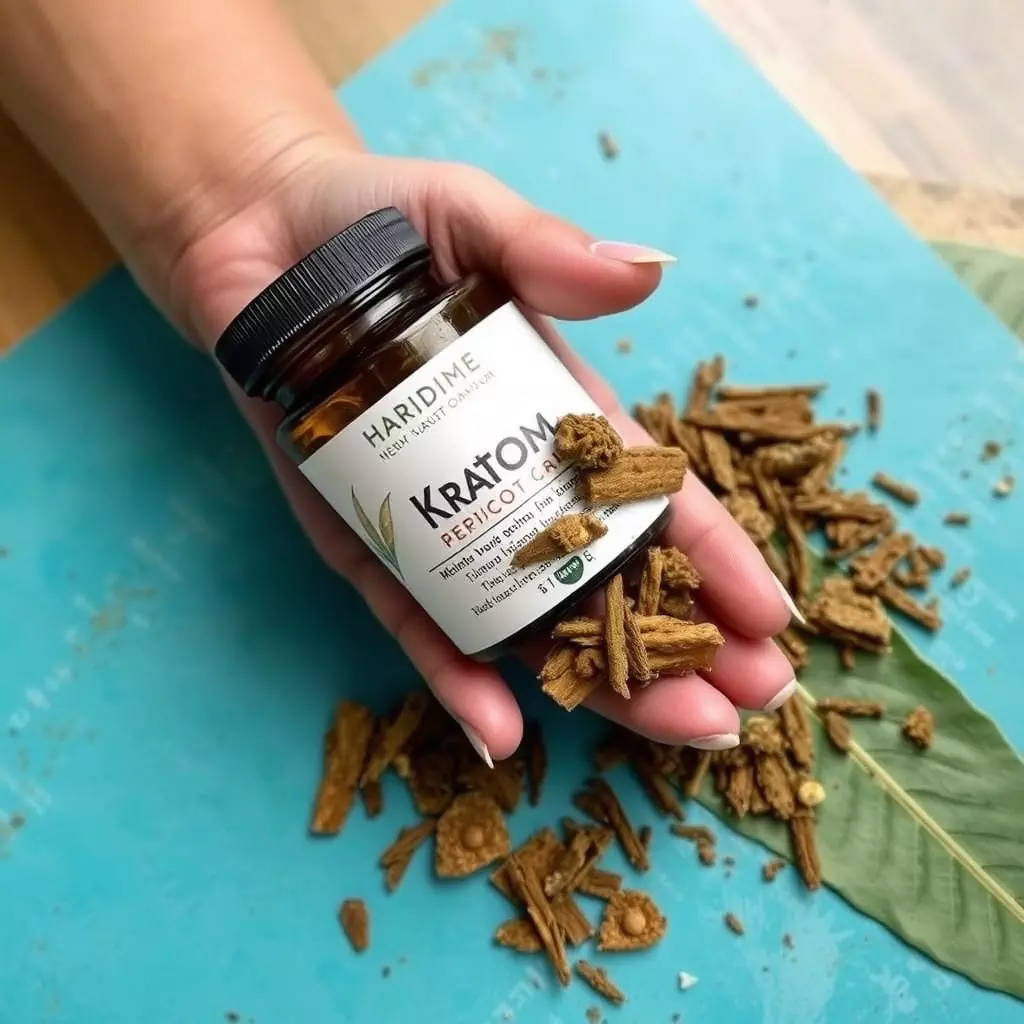Kratom, a plant from Southeast Asia, has been identified as a versatile therapeutic option for managing addiction and providing joint pain relief. Its active alkaloids, such as mitragynine and 7-hydroxymitragynine, can engage opioid receptors, offering a natural alternative to conventional opioids that helps with withdrawal management. For those dealing with chronic joint conditions like arthritis and fibromyalgia, certain kratom strains provide anti-inflammatory benefits, potentially offering pain relief with fewer side effects than traditional medications. While its potential is promising, it's crucial to approach kratom use with caution due to its varying legal status and the necessity for more scientific research to fully understand its efficacy and risks. Healthcare providers should carefully manage dosage, purity, and interactions when considering kratom as part of a treatment plan, ensuring that its use is safe and complements evidence-based practices for patient care. Always consult with a healthcare provider before using kratom for joint pain relief in the context of recovery from addiction to ensure proper management of risks and benefits.
Exploring the therapeutic potential of kratom in addiction treatment and joint pain relief, this article delves into the mechanisms behind its effects and how it can be integrated into recovery protocols. Kratom’s unique properties offer a promising avenue for those struggling with substance abuse while also addressing chronic joint pain. We will navigate the nuances of kratom’s role in addiction treatment, its benefits, and the safety considerations necessary for effective joint pain relief during recovery. Join us as we uncover the multifaceted benefits of kratom for those on the path to healing.
- Unraveling the Potential of Kratom in Managing Addiction and Offering Joint Pain Relief
- Kratom's Role in Addiction Treatment: An Overview of Mechanisms, Benefits, and Considerations
- A Comprehensive Guide to Safely Incorporating Kratom for Joint Pain Relief During Recovery from Addiction
Unraveling the Potential of Kratom in Managing Addiction and Offering Joint Pain Relief

Kratom, a tropical tree native to Southeast Asia, has garnered attention for its potential therapeutic properties, particularly in managing addiction and offering relief from joint pain. Emerging research suggests that kratom contains compounds called alkaloids, which can interact with the opioid receptors in the brain, providing a natural alternative to traditional opioids for those struggling with addiction. This dual action may aid in reducing withdrawal symptoms and cravings associated with substance dependency, offering a pathway to recovery that is both safe and effective. Moreover, the anti-inflammatory effects of certain kratom strains have been observed to alleviate joint pain relief without the adverse side effects often associated with pharmaceutical interventions. Users report that kratom helps in managing chronic pain conditions such as arthritis and fibromyalgia, improving overall quality of life by reducing pain and enhancing mobility. As a result, kratom holds promise for individuals seeking holistic approaches to manage both addiction and joint pain, although further scientific investigation is necessary to fully understand its efficacy and potential risks.
Kratom's Role in Addiction Treatment: An Overview of Mechanisms, Benefits, and Considerations

Kratom, a plant from Southeast Asia with leaves that contain compounds that can interact with opioid receptors in the brain, has gained attention as a potential therapeutic aid in addiction treatment. Its alkaloids, primarily mitragynine and 7-hydroxymitragynine, may offer relief from joint pain, a common issue among those suffering from addiction, by modulating pain perception and reducing inflammation. In the realm of addiction recovery, kratom’s role is multifaceted. It can alleviate withdrawal symptoms, which are a significant barrier to successful detoxification and recovery. By mitigating the intense discomfort associated with abstinence from opioids, individuals may find it easier to engage in treatment programs. Furthermore, kratom’s potential for joint pain relief can be particularly beneficial for those with comorbid chronic pain conditions, which often accompany addiction. However, it is imperative to approach the use of kratom with caution and under professional supervision. The regulatory status of kratom varies by region, and its efficacy and safety profiles are still subjects of ongoing research. Considerations such as dosage, purity, and interaction with other substances of abuse or prescribed medications must be carefully managed to ensure a safe and effective treatment process. As such, while kratom holds promise for providing joint pain relief and support in addiction treatment, it is crucial to weigh its benefits against the necessary considerations and to pursue evidence-based practices alongside medical guidance.
A Comprehensive Guide to Safely Incorporating Kratom for Joint Pain Relief During Recovery from Addiction

When exploring alternative methods for joint pain relief during recovery from addiction, individuals may consider the potential benefits of kratom. Kratom, a plant native to Southeast Asia, contains compounds that can interact with the opioid receptors in the brain, offering analgesic effects without the same level of sedation or euphoria as prescription painkillers. For those transitioning from opioid dependence, integrating kratom into a recovery plan may provide much-needed relief from joint discomfort while minimizing the risk of developing another substance use disorder. It is crucial to approach this method with caution, as kratom itself can be addictive and has the potential for side effects and interactions with other medications.
To safely incorporate kratom for joint pain relief during recovery, it is imperative to consult with a healthcare provider. They can offer guidance on appropriate dosages, potential risks, and how kratom might complement or conflict with one’s existing treatment plan. Additionally, because the regulatory status of kratom varies by region, understanding the legal implications and adhering to local laws is essential. Monitoring one’s response to kratom is also key; symptoms such as nausea, dizziness, or changes in mood should be reported to a medical professional. By using kratom judiciously and under medical supervision, individuals can explore its potential benefits for joint pain relief while prioritizing their overall health and well-being during the recovery process.
In conclusion, the exploration of kratom’s potential in managing addiction and offering joint pain relief presents a multifaceted approach to recovery. Its role in addiction treatment, as detailed across this article, includes various mechanisms and benefits that warrant further investigation. For individuals grappling with both substance use disorders and joint pain, integrating kratom may serve as an alternative therapeutic option. However, it is imperative to approach its use with caution, adhering strictly to guidance from healthcare professionals. The safety and efficacy of kratom for joint pain relief during recovery are subjects of ongoing research, emphasizing the need for more studies to clarify its role in treatment protocols. As such, while kratom holds promise, a balanced view that considers individual circumstances is essential for informed decision-making in the realm of addiction treatment and chronic pain management.






